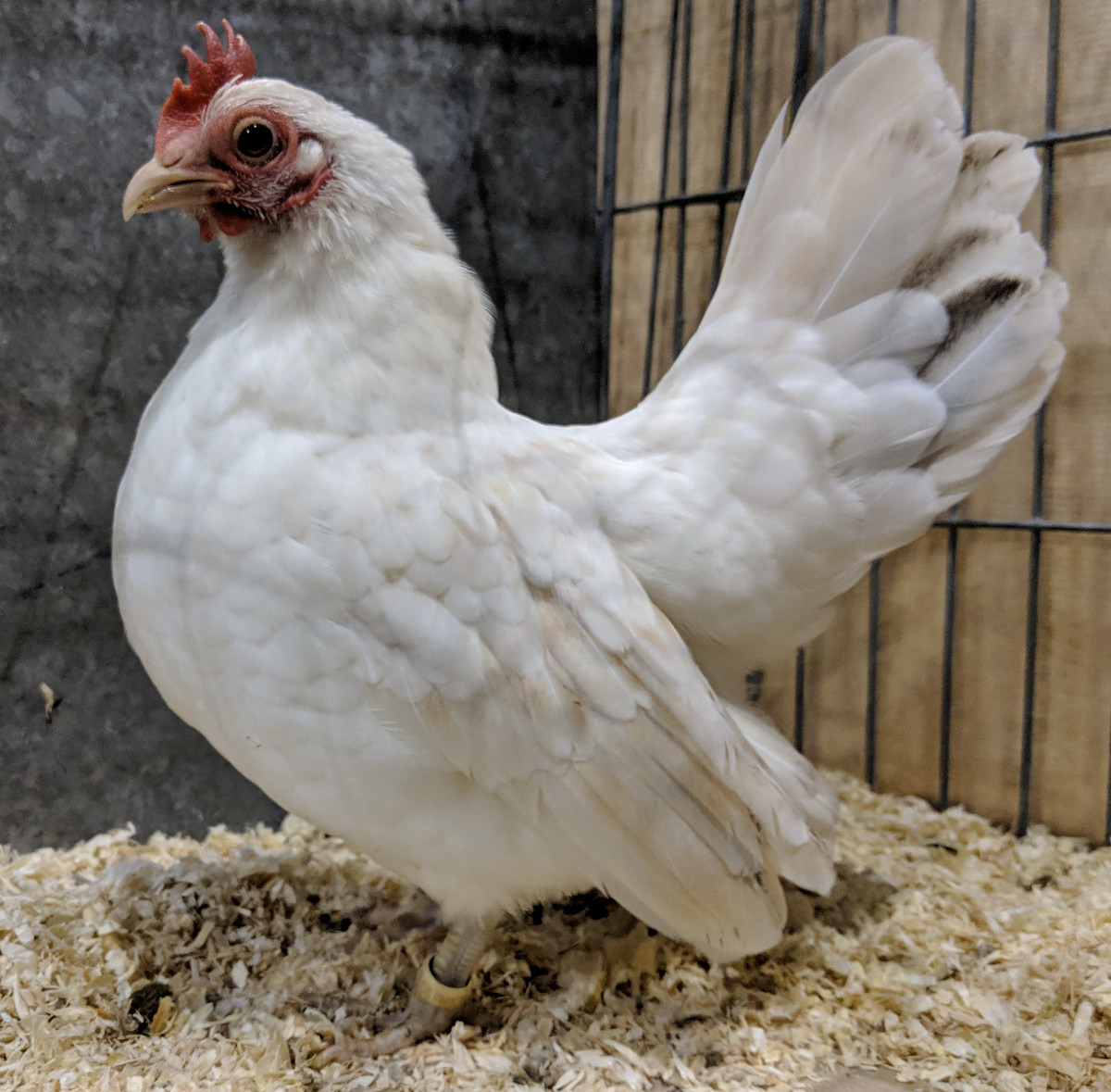
Breeding Japanese bantams.
The Japanese bantam is the product of several hundred years of selective inbreeding.
Table of Contents
To be worthy of showing, a Japanese Bantam must have stout full breasts, short legs, a short back and upright tail carriage, with main tail feathers well spread, much like a fan.
How to select Japanese bantams for breeding:
When selecting any chicken for a breeding program it is important the bird is healthy, free from parasites and a good example of the breed.
Tails falling to the side and carried forward past the side of the head often are a telltale sign of a long back, or too little back and saddle feather to serve as a cushion, which assists in keeping the tail erect.
Below: Proper tail carriage accompanied by a short back will form a "U" between tail and hackle.

Below: The impressive tail of the Japanese bantam cockerel.

The body should be horizontal as possible, both top and bottom lines, The body, overall, also should be short and blocky with good width from shoulders to base of tail.
In the Japanese bantams I want a relatively large comb that follows a downward line over the back of the head, not high above the head like a Leghorn.
Below: The comb of the Japanese bantam, a good proportion is behind the head.
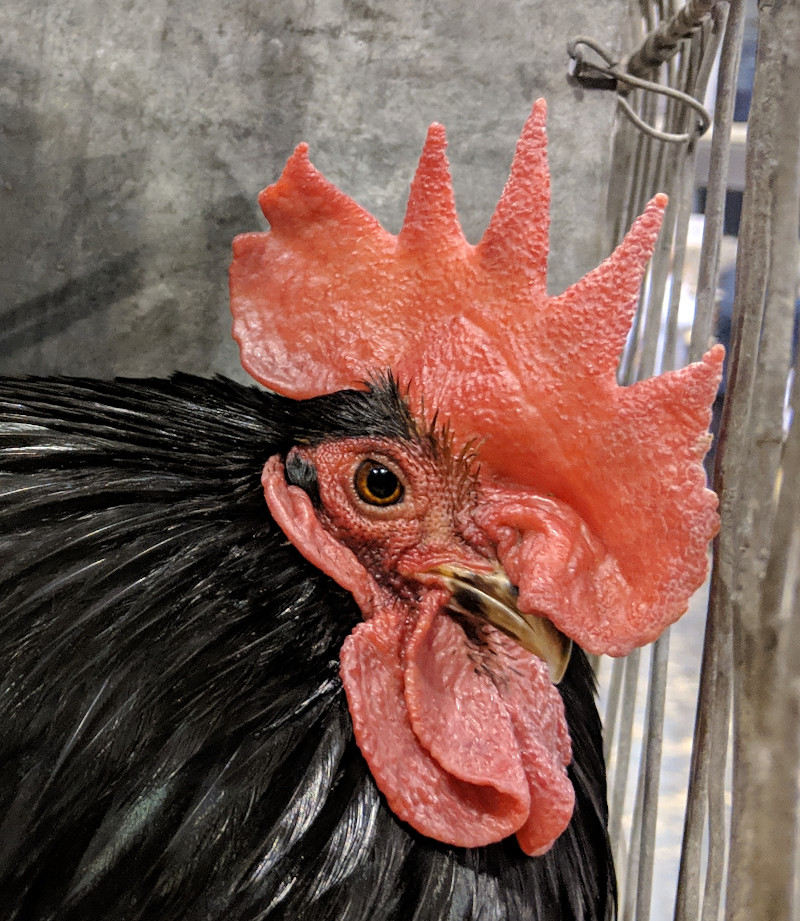
Below: The head of the Japanese bantam should be a good size.
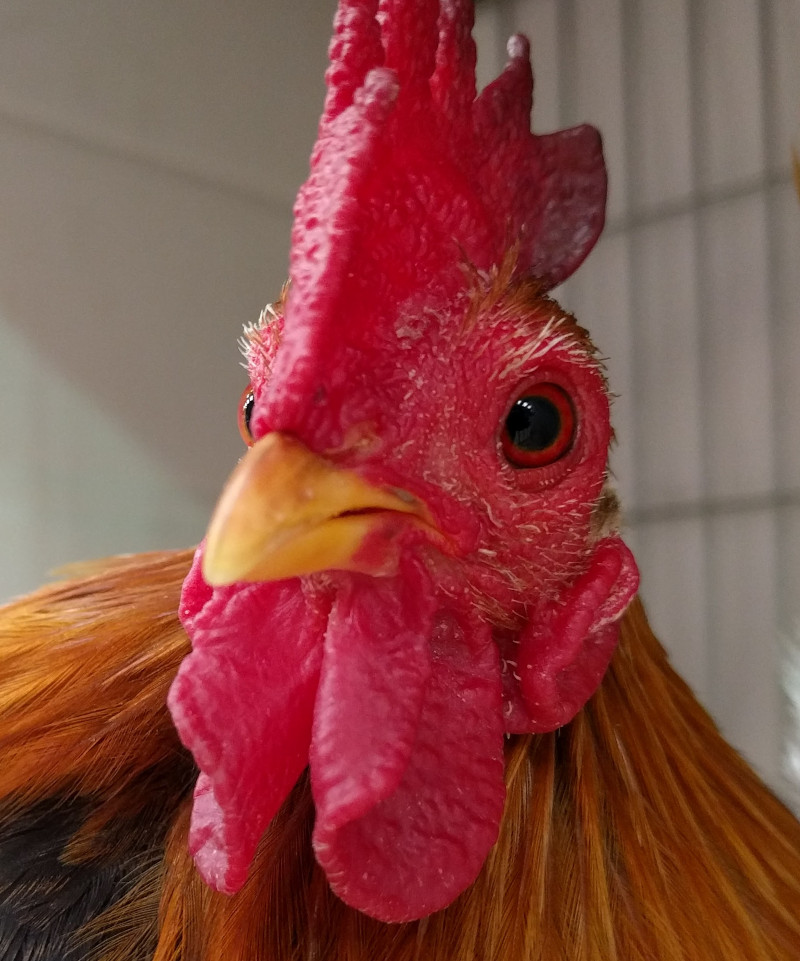
The beak should be fairly wide, not too long, and well rounded, giving the appearance of strength.
The head should be set on a short, slightly arched neck with full, flowing hackle feathers. The short neck does much to emphasise the appearance of good length of feather in the main tail and the long, sword-like sickle feathers on the male.
A long neck makes the tail feathers appear shorter than they may actually be, while the short neck does just the opposite.
Wing carriage of the Japanese bantam has much to do with the general appearance of looking so close to the ground.
Below: The position of the wings of the Japanese bantam. It is sometimes better seen from behind.
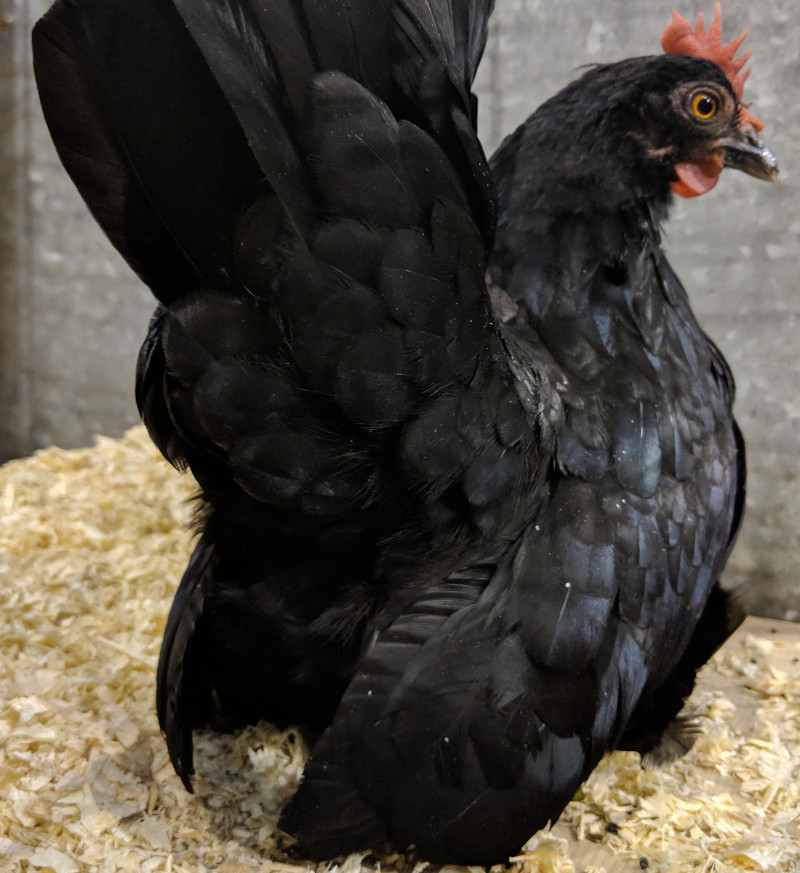
Breeding Japanese bantams for colour:
Type does make the breed, but it is still colour that makes the variety and adds to its beauty. Colour is one of the most difficult aspects of breeding Japanese bantams.
Only 10 points (out of 100) are available in the British Poultry Standard for colour.
I would suggest, however, if you have a colour found in other breeds, study anything and everything you can find about the breeding of your particular colour.
Breeding the Mottled or Birchen pattern, for example, is much the same in all breeds.
The major difference is in type, and in Japanese bantams type is about 75 per cent of the bird, give or take a few points. But, even so, without fairly good colour, we don't have a variety.
Problems with breeding Japanese bantams:
Breeding Japanese bantams is wasteful in some respects, 25% of viable eggs never hatch and 25% will have long legs.
Japanese Bantams carry the recessive creeper gene Cp which gives the breed short legs.
If two short legged birds are bred together, 25% of the offspring will be pure for Cp, a lethal gene combination which causes a disability making them unable to hatch. 50% of the offspring will carry one Cp gene and are therefore short legged as per the breed standard and the final 25% will not carry the gene and be long legged.
Breeding a short legged with a long legged will produce 50% short legged, 50% long legged without any lethal embryos.
Fertility in Japanese bantams:
Fertility can be a bit of an issue with the Japanese bantams because of it's low carriage, tight dense feathering and centuries of inbreeding.
When you set your first setting of eggs for the year, candle them after 7 days to see what is fertile.
If fertility is low in your Japanese bantams, you may want to shuffle birds around or trim the vent feathers.
The first step to efficient and successful mating is putting your birds together in such a way that you can trace the results.
First you confine the parents in such a way that you can determine which eggs are from which parents.
Secondly, collect and mark the eggs from each set of parents, then set the eggs in your incubator. This will tell you if an individual male or female is suffer low fertility.
Different people have different approaches to setting up their breeding pens, some raise a lot of birds, and then cull heavily. With this method you get a wide variety of offspring; every type and every colour.
This may work well once you have concentrated your gene pool but I have given up on the vast numbers method of raising offspring and now prefer an accurate targeted and altogether more predictable approach. It saves time, money frustration and resources.
I then remove the long legged chicks from the breeding plan and leg band the good ones according to their parents.
